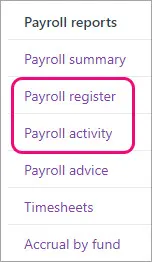
If you're stuck or feeling unsure, try our free eLearning to discover everything you need to know about finalising your payroll information.
Before processing the first pay of the new payroll year, you should confirm that the amounts you've paid your employees in MYOB match the amounts that are listed against each employee's record. This will identify if any amounts have been incorrectly entered against an employee's pay history instead of being paid via payroll.
You'll do this by running and comparing the Payroll register and Payroll activity reports.
Here's a quick overview:
Make it easy to compare these reports Right-click each report and choose to Open link in new tab to display the reports on separate browser tabs.

This means an employee's pay history has been manually changed in their contact record. This might have occurred if you started using payroll part-way through the payroll year, and you've entered your employees' year-to-date payroll totals.
Otherwise, it means an employee's pay history has been manually updated in error – usually in an attempt to fix their pay amounts. Instead, you should only ever fix a pay by changing or deleting the pay.
Providing you have not processed the first pay for the new payroll year, you'll need to identify which employee this impacts, then fix their pay history.
If the reports don't match and you've processed the first pay for the new payroll year, you'll need to contact our support team for help.
Need help fixing an employee's pay history?
We recommend speaking with your accounting advisor.
Before finalising, you should confirm that the year-to-date (YTD) amounts you've sent to the ATO for the payroll year match the payroll figures in MYOB.
Do this by comparing two reports to ensure they match:
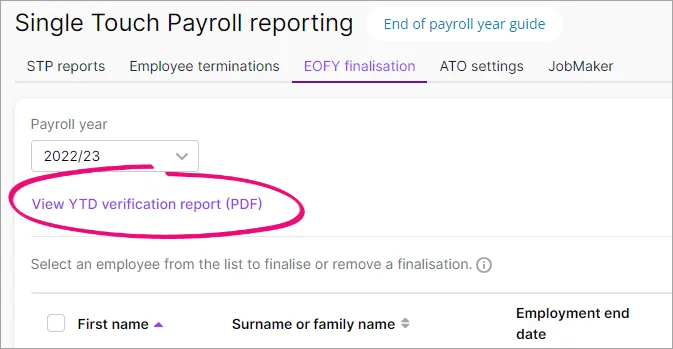

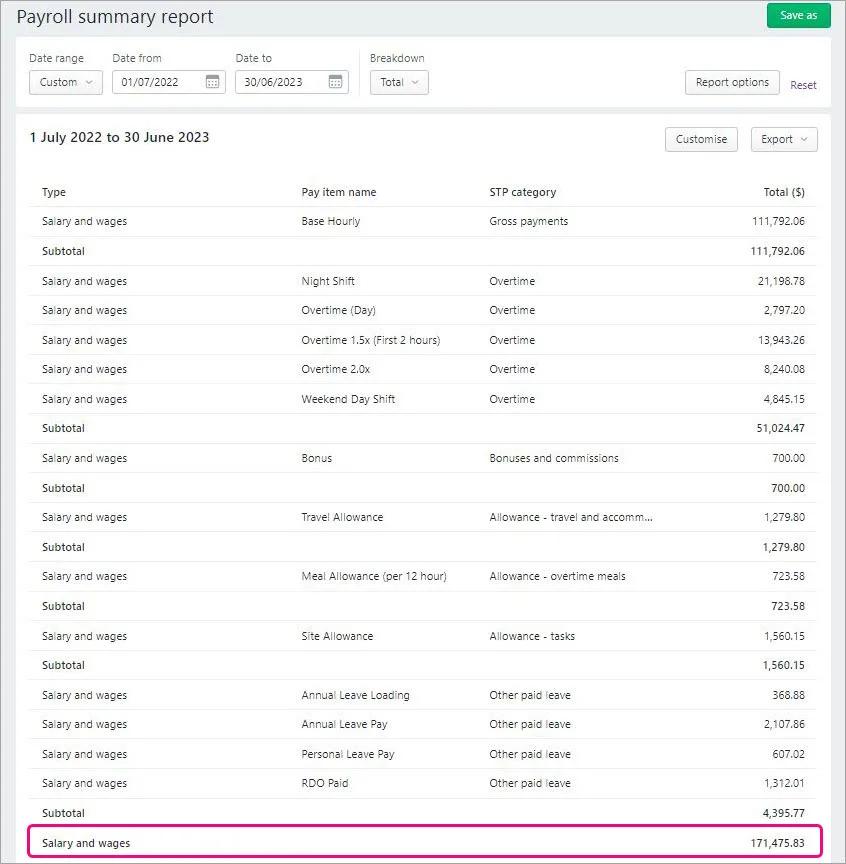
After you've run the above reports, compare the YTD total wage amounts on both. If they match (like in our example), you're ready to finalise.
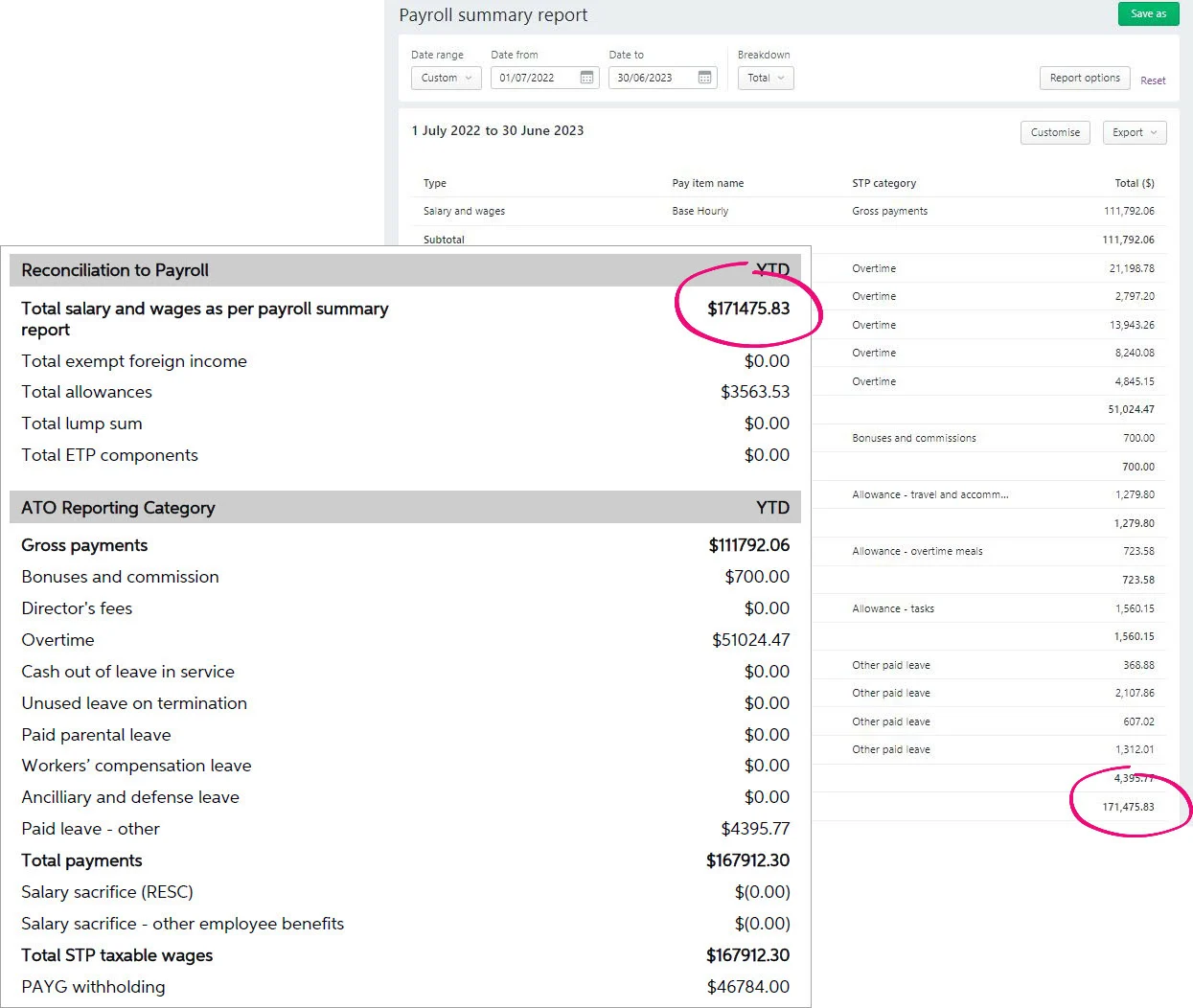
Here are some things to check.
Make sure you've assigned an ATO reporting category to each of your pay items.

Once all pay items are assigned an ATO reporting category, run the YTD verification and Payroll summary reports again (as we did above) to ensure they match. If they do, you're ready to finalise. Otherwise, continue below to check the reported wage values for individual employees. This will help you narrow down your out of balance.
There are two reports you (or your accounting advisor) can use to check the amounts paid to individual employees for the payroll year.
Here's what these reports show:
Description
Payroll register (in MYOB)
The total wages include all pay items and doesn't reduce the total wages by any non-taxable deduction or wage pay items, and pay items that don't have an ATO reporting category.
Summary of Payments (in the Single Touch Payroll reporting centre)
The gross payments amount is reduced by any non-taxable deduction or wage pay items, and pay items that don't have an ATO reporting category.
To ensure the latest year-to-date amounts are sent to the ATO for an employee, you can send an update event to the ATO as described in the FAQs below.
If you see a negative amount for an ATO reporting category on an employee's Summary of Payments report, this amount will be reported as zero to the ATO. To fix it, you'll need to reassign this value. We recommend seeking advice from your accounting advisor for help.
Reports still don't match?
You might need help from an expert to dig a little deeper into your issue. Reach out to your accounting advisor, or try the MYOB professionals on our community forum. Of course, you can always get help from our support team.
As part of processing an employee's final pay, you need to notify the ATO. This lets the ATO know the employee's termination date and any ETP components in their final pay.
You might have completed these steps when you processed the employee's final pay. If you didn't, complete these steps for each employee you terminated in the payroll year.
The steps for notifying the ATO of a terminated employee are slightly different for STP Phase 1 and STP Phase 2 – so choose the steps that apply to you.
Am I reporting via STP Phase 2?
You can check in the STP reporting centre (Payroll menu > Single Touch Payroll reporting). How do I get ready for STP Phase 2?

This declaration is processed in the same way other Single Touch Payroll reports are. They must be accepted by the ATO, which can take up to 72 hours.
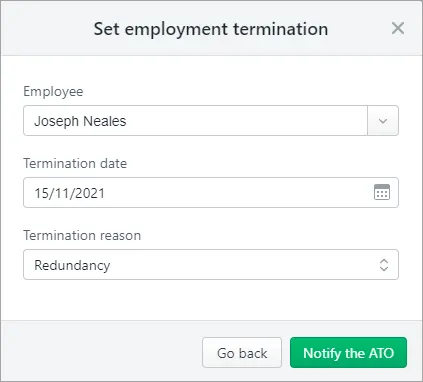
This declaration is processed in the same way other Single Touch Payroll reports are. They must have a status of Accepted in the payroll reporting centre before you can finalise your STP information.
Finalising your Single Touch Payroll information is done in just a few clicks. You need to do it before the ATO's finalisation deadline, which is typically July 14.
Here's a quick overview:
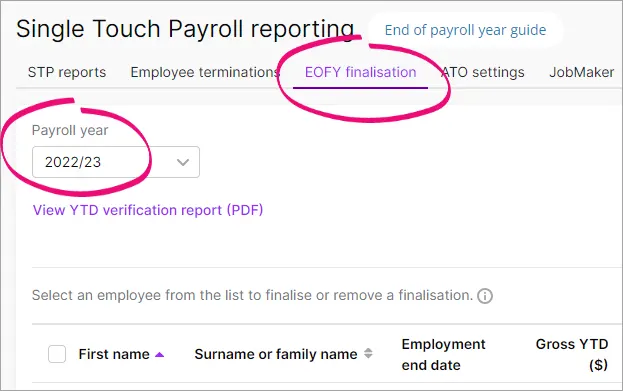
When you finalise, an update event is sent to the ATO containing the year-to-date payroll totals for the finalised employees. You can see this update event listed with your other payroll submissions on the STP reports tab. How to view your submitted payroll reports.
Each employee that has been finalised will have the Final indicator ticked in the payroll reporting centre. You can let these employees know that they can now sign in to myGov to complete their tax returns or view their income statement. That's right—you don't need to prepare payment summaries or group certificates for them!
We also recommend using a report pack to generate a set of key payroll reports for the finalised year. You should print or save these reports as a point-in-time record of your payroll data for the whole payroll year.
You're now ready to start processing pays from 1 July for the new payroll year. The latest tax tables will automatically apply so you don't have to worry about downloading them. Also learn about the new option in MYOB to keep you compliant with super guarantee rate increases.
You must be reporting to the ATO via STP Phase 2
If you haven't already, you need to move to STP Phase 2 to stay compliant with the ATO. But we have you covered – see how easy it is to move.
Yes, you can record a pay in July before finalising - BUT FIRST make sure you've compared your payroll reports to identify and fix any discrepancies. Then, you can record a pay with a July Date of payment before finalising.
Because the July pay is dated in the new payroll year, it won't be included in the payroll year you're yet to finalise.
When you look at the EOFY finalisation tab or the YTD verification report in the STP reporting centre for the current or last payroll year, you might notice the values don't look right. This can happen if you've recently moved to STP Phase 2.
You can easily fix this by sending an update event. If needed you can do this for the current and previous payroll years.
You can sync your payroll totals in MYOB with the figures held by the ATO. This is a quick way of ensuring the ATO has the current year to date payroll figures for your employees.
If you're reporting via STP Phase 2, you can send an update event from the STP reporting centre. Otherwise you'll need to record a zero dollar ($0) pay for each employee whose year to date payroll totals you want to send to the ATO.
Am I reporting via STP Phase 2?
You can check in the STP reporting centre (Payroll menu > Single Touch Payroll reporting). How do I get ready for STP Phase 2?

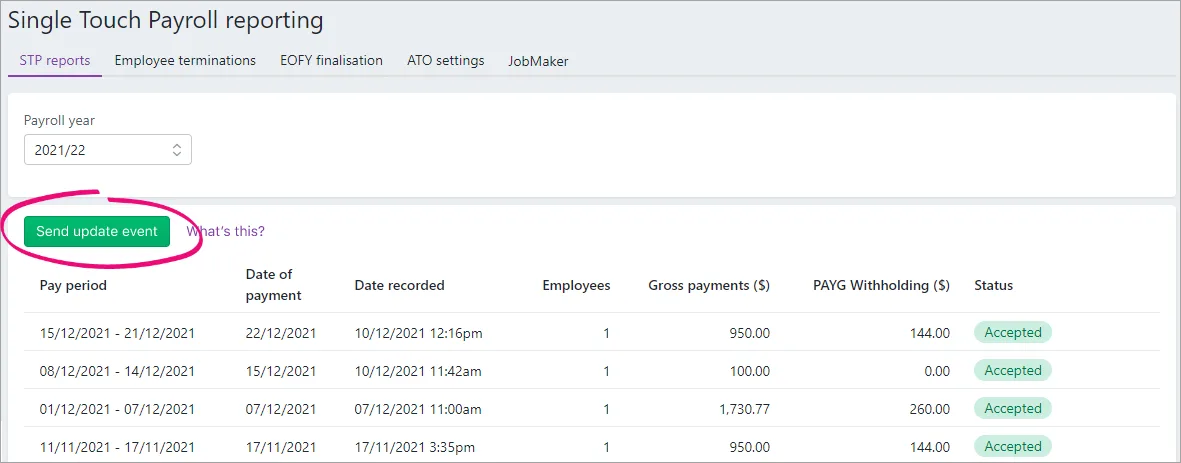
Update events are listed in the Single Touch Payroll reporting centre with your other payroll submissions, but with zero (0.00) amounts.
You can send an update event for an employee by recording a $0 pay. This type of pay is also called a void pay and it's like any other pay, but all hours and amounts will be zero. When you record a $0 pay, the employee's latest year to date payroll totals will be sent to the ATO.
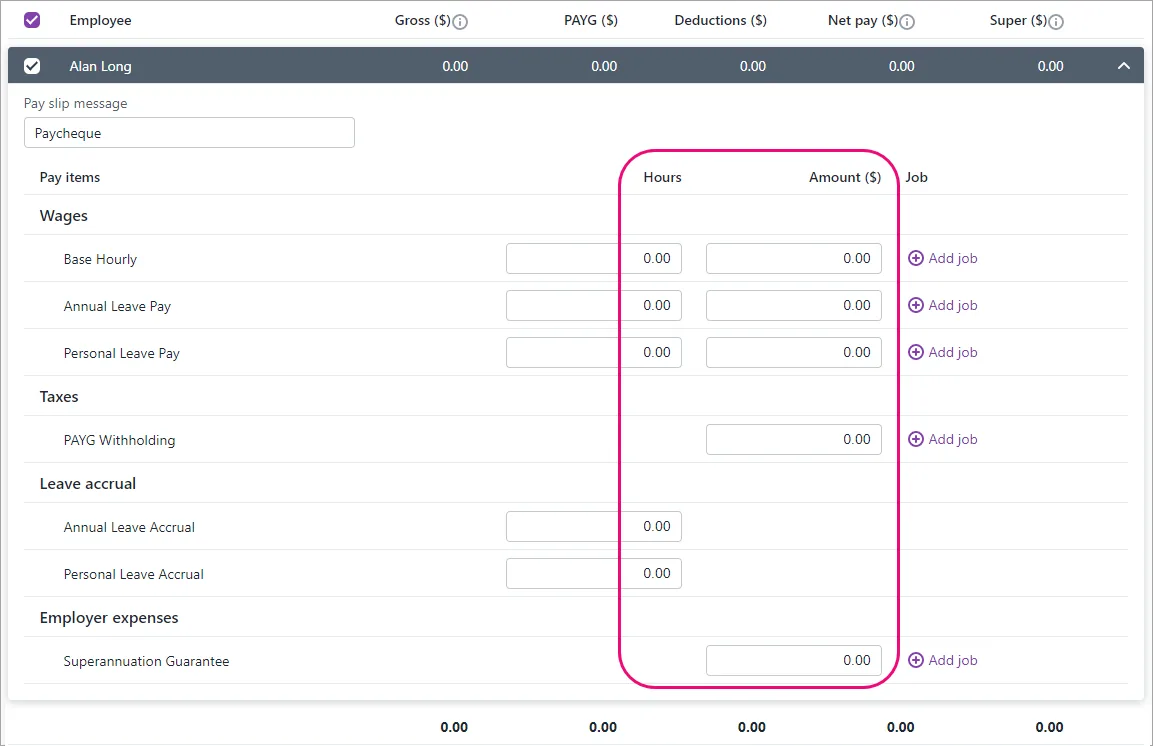
Update events are listed in the Single Touch Payroll reporting centre with your other payroll submissions, but with zero (0.00) amounts.
If you process a pay in the new payroll year (e.g. 1 July or later) but the Date of payment is in the previous payroll year (e.g. 30 June or earlier), the ATO will treat the pay as an update event. Even if the pay contains amounts that you're reporting to the ATO, they'll consider it an update event (and not a pay event) because it's related to the previous payroll year.
But don't worry, even though the pay run shows as a $0 update event in the STP reporting centre, the updated year-to-date payroll totals (for last payroll year) for the employees in the pay run will still be reported to the ATO.
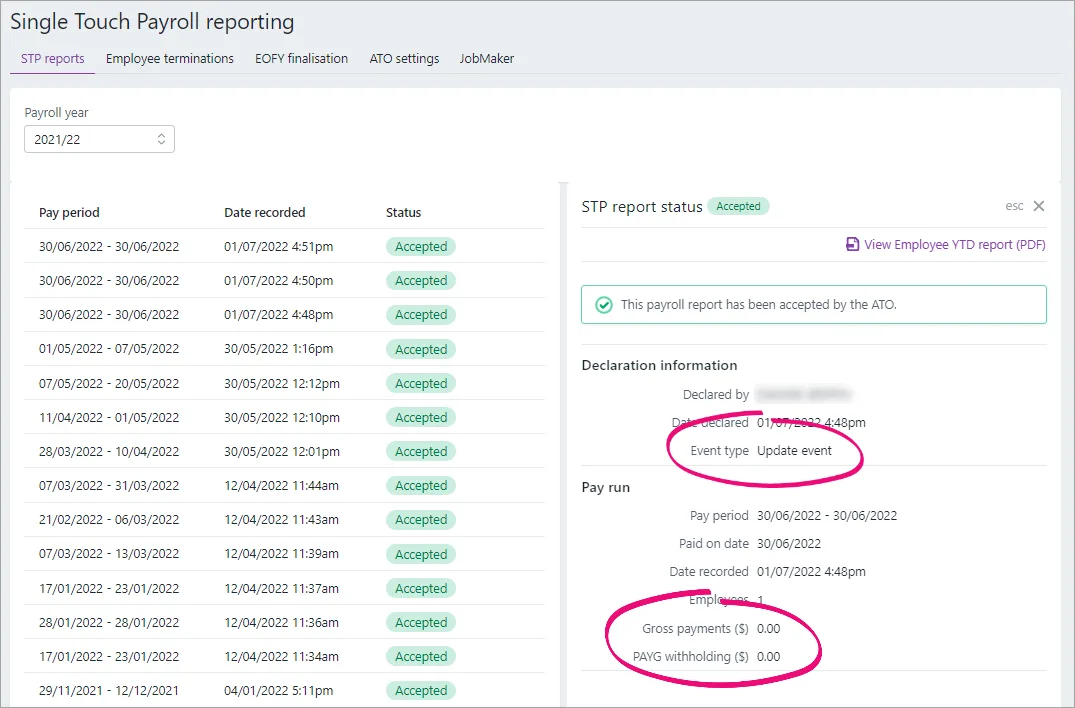
Each STP report sent to the ATO includes the employer pay period information and the employee year-to-date (YTD) amounts.
As the ATO doesn't allow you to delete these reports, the Business Portal will show every pay run declared through STP, including ones that you have deleted or reversed in your software.
So, in most cases, if you've made payroll adjustments the Business Portal may not match your STP reports. And that's OK. Just make sure you check year-to-date totals in MYOB before finalising.
The ATO does not receive the details of individual pay runs, only the year-to-date payroll amounts. So, provided you've submitted a pay after setting up STP, the latest year-to-date totals will be submitted. Still, we recommend you check your YTD amounts prior to finalising.
You can undo an individual employee's finalisation. When you do, the employee's income statement in myGov will no longer be Tax ready so they won't be able to pre-fill and lodge their tax return.
You can set up a report pack containing key EOPY reports. Once you've set it up, you can generate all your EOPY reports at once – with just a few clicks. And you can re-use the report pack to generate the same group of reports each year.
Start by creating a report pack template. You only need to do this once to select the reports to include in the template. Here are the reports to include, as they appear when creating the template:
Then, at the end of each payroll year: